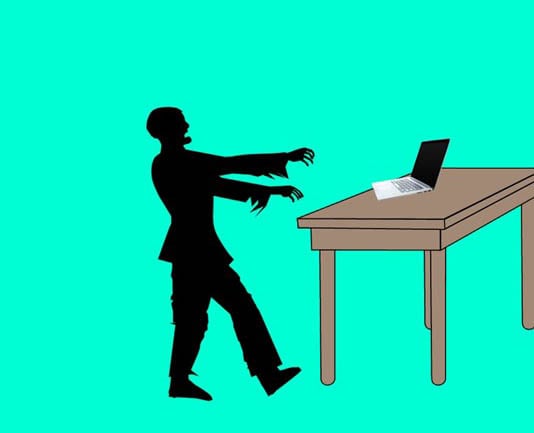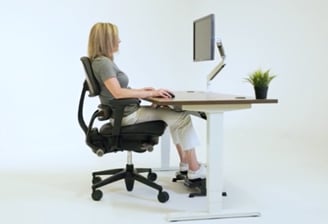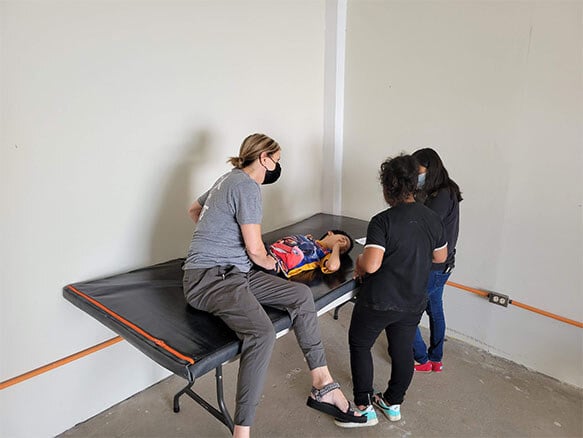We spend so much time at our desks throughout the workday trying to be as productive as possible. While we often focus on getting the right chair and keyboard setups, we tend to overlook a crucial factor that can significantly impact our health: The height of your desk. In this blog post, we'll explore how shoulder pain from sitting at a desk can be improved by addressing desk height. Desk height can contribute to shoulder pain and the conventional wisdom of having your feet flat on the floor might not be the best solution for everyone. We'll delve into key research that points out the link between improper workplace setup and shoulder discomfort.
The Conventional Wisdom: Feet Flat on the Floor
The historic and outdated ergonomic wisdom suggests that having your feet flat on the floor is essential for a healthy seated posture. However, this advice can be misleading, especially for individuals of shorter stature. When the desk height is fixed and not adjustable, adhering to this blanket statement might inadvertently cause shoulder pain and discomfort in the neck.
Non-Height Adjustable Desks
Many office desks, particularly older ones or those designed with cost-cutting in mind, are not height adjustable. The common height range for these static desks is 30 inches. This height limitation can be problematic for individuals who do not fit the "average" height range needed to have good upper body posture during the workday. For shorter individuals, a fixed desk height can force them to raise their arms in a “Zombie” fashion to reach for the keyboard and type.
The Shoulder Connection
Elevated Shoulders: Raising your arms to align with a non-adjustable desk often results in elevated shoulders. When your arms are constantly reaching upward to the desk surface, it places additional stress on the muscles (trapezius, deltoids, scalenes) surrounding the shoulder joint. Over time, this can lead to chronic tension and shoulder pain.
Awkward Posture: Non-level alignment with your desk can also force your arms into an awkward, extended position, making it challenging to maintain a neutral and comfortable posture. Prolonged periods in such positions can lead to strain and discomfort in the shoulder and upper back areas.

Research on Desk Height and Shoulder Pain
Several studies have examined the impact of workplace ergonomics, including desk height, on musculoskeletal discomfort. These studies shed light on the importance of proper desk setup in preventing shoulder pain:
A 2018 study published in the Journal of Work1 found that improper desk height was associated with increased muscle activity surrounding shoulder and upper back pain among office workers
A study published in Scand Journal Work Environmental Health2 noted that a properly adjusted desk and workplace set-up resulted in reduced discomfort scores in the neck, shoulder, and upper back region.
Finding Solutions
If you find yourself dealing with shoulder pain due to an immovable desk, there are a few strategies you can employ:
Add a Foot Support: If you find yourself reaching for your desk, then grab a footrest to raise up the height of your chair to where your arms are level with the desk.

Evaluate your Arm Rests: If your armrests are too long and cause you to reach forward for your keys, consider getting them out of the way so that you aren’t reaching too far forward and aggravating your muscles surrounding the shoulder.
Advocate for Change: If possible, discuss the issue with your employer or supervisor. They might be willing to invest in adjustable desks or an office chair that allows for more shoulder movement to improve the ergonomic conditions for all employees.
Conclusion
Shoulder pain and upper back pain are common issues that many office workers face, and desk height is often an overlooked contributor. For those stuck with non-height adjustable desks, it's essential to be proactive about finding solutions to alleviate shoulder strain. Research has demonstrated the significant impact of desk height on shoulder discomfort, highlighting the importance of the workplace setup and creating a healthier and more comfortable workspace. By understanding the connection between desk height and shoulder pain and taking steps to address it, you can reduce the risk of chronic discomfort and improve your overall well-being.
Shoulder PainReferences:
1. Intolo, Pattariya et al. ‘Analysis of Neck and Shoulder Postures, and Muscle Activities Relative to Perceived Pain During Laptop Computer Use at a Low-height Table, Sofa and Bed’. 1 Jan. 2019 : 361 – 367.
2. Ketola R, Toivonen R, Hakkanen M, et al. Effects of ergonomic intervention in work with video display units. Scand J Work Environ Health2002;28:18–24.
Recent Post

Four Lessons About Seating Everyone Can Learn from Wheelchair Users
September 18, 2025Working with wheelchair users has been an...

People Over Profits: Why Anthros Puts Comfort and Care First
September 17, 2025At Anthros, our mission is simple: to put people...










